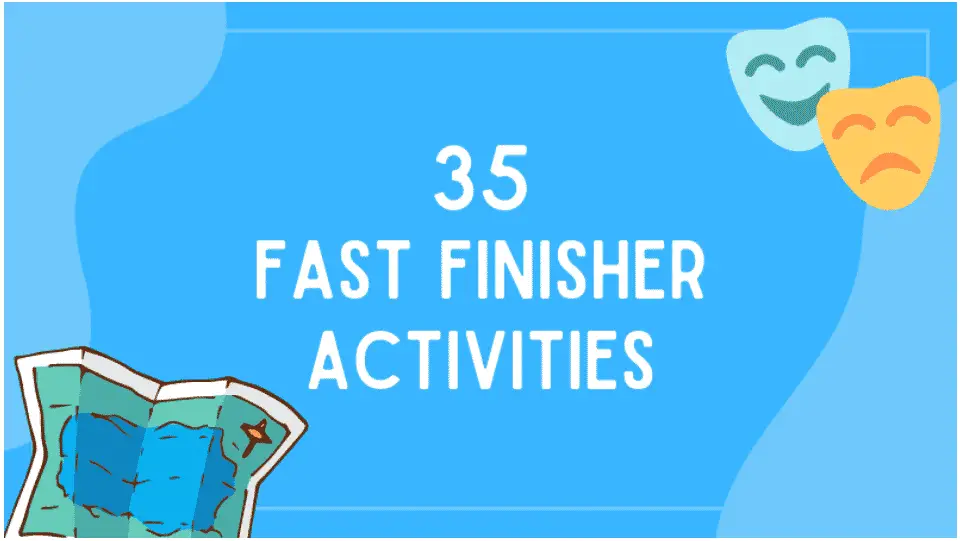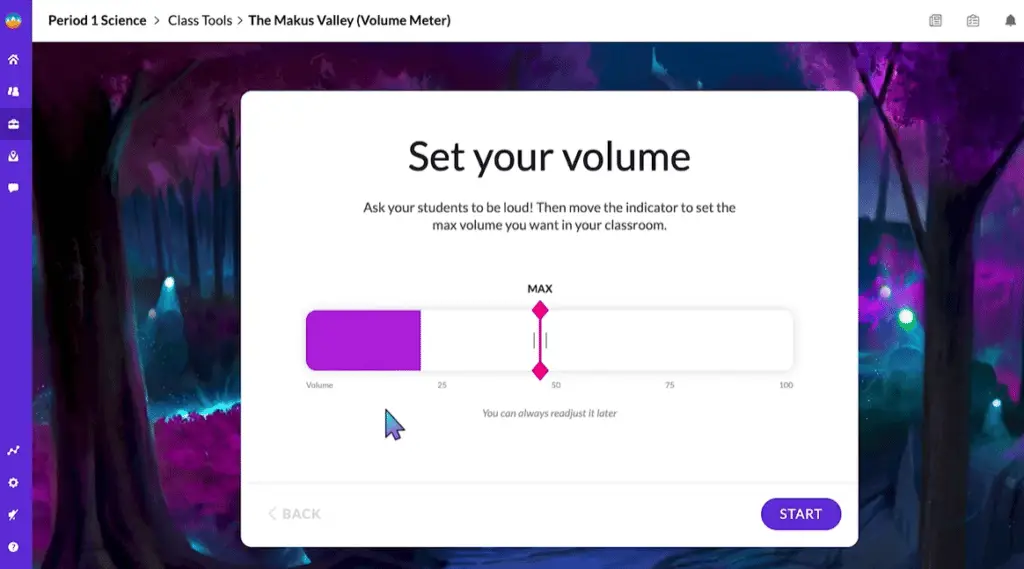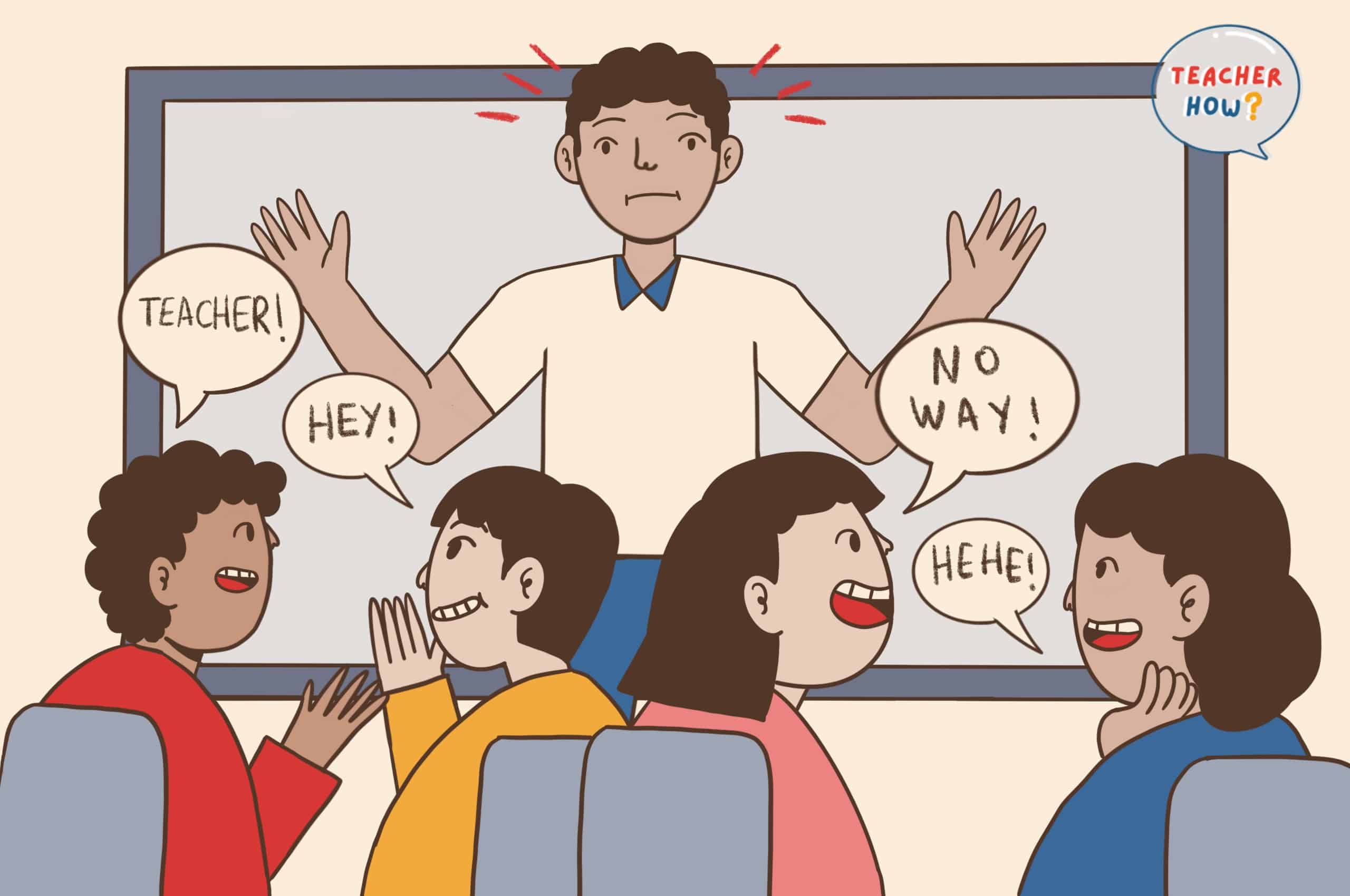Every teacher would love for their students to be quiet during a lesson as they communicate the learning. Sometimes, however, students won’t stop talking, no matter how often you tell them. Not only will you feel disrespected, but this disruption will affect the learning of the other students.
Here’s how to deal with students who won’t stop talking:
- Take a deep breath and relax.
- Assess the current lesson.
- Have opportunities for talking during the lesson.
- Occasionally change the learning environment.
- Have a call and response signal to restore order.
- Don’t talk over them.
- Set expectations on noise levels.
- Change the seating arrangement.
- Countdown from five to zero.
- Communicate the rules about talking in class.
- Introduce points for better class participation.
- Establish physical contact.
- Stop teaching until the students stop talking.
- Talk to the noisy students privately.
- Use a noise meter.
- Encourage students to take responsibility.
- Introduce a brain break.
- Introduce a discussion.
- Give extra tasks to students who talk often.
- Illustrate how talking causes them to miss information.
When addressing the problem of students who won’t stop talking, you first need to appreciate that you are not the problem. Many teachers face this challenge, which can be frustrating if you don’t nip it in the bud. This article will detail what you can do to gain control of your class from students who won’t stop talking.
1. Take a Deep Breath and Relax
After asking students to quieten down multiple times, your next instinct will probably be to lash out at them. This is a normal reaction to your frustration, especially if their talking distracts others in the class.

You cannot communicate nor teach in this environment. However, lashing out may be counterproductive. There are times when lashing out seems to work, but often, the students will rebel, making your work harder. It would help if you were calm when dealing with the issue.
Take some deep breaths and count to ten. Or, if another adult is present, you might want to step out of the room for a short time to recompose yourself.
2. Assess the Current Lesson
Do the students always talk during class, or is today’s class an exception? Sometimes, students lose focus and engage in other activities when the lesson is too easy or too difficult.
The lesson may also be on the boring side, so the students would need something more exciting to reengage them.
You need to get to the root cause of why they are not showing interest, and a good place to start is in the lesson. Find out what makes them lose focus in class and seek ways to remedy that.
For example, if the lesson is too easy, find ways to make the assignments a little challenging so that the students can focus more on their work instead of one another.
Similarly, you might often get students who are finishing their work early and then spend the remainder of the lesson not being productive. If so, make sure you have some extension activities at the ready. Check out this article for some fantastic fast finisher activities.

3. Have Opportunities for Talking During the Lesson
Students are not expected to spend an entire lesson just listening to the teacher. They will lose interest and unintentionally start talking to one another. Analyze the students’ behavior, particularly the point when their attention starts deviating.
If you notice they start fidgeting after listening to you for 15 minutes, give them a task that will allow them a chance to talk. For example, “partner talk” is a simple action, yet can be tremendously effective. Present an open-ended question and ask students to share their ideas with their partners first, before getting their feedback.
Creating opportunities and encouraging students to vocalize their thoughts not only enhances their communication skills but will also reduce students talking when it’s time for them to listen.
4. Occasionally Change the Learning Environment
Monotony can sometimes be the cause of restlessness among students. Find ways to change the class setting and the layout of your lessons. Once in a while, you may ask the students to work on a project in small groups as you monitor what they do.
Another way is to actually change the learning environment by swapping the classroom for a different setting. Take your class outside if the weather permits, or teach your lesson in a separate area of the school.

The novelty of a change of environment works wonders in sparking students’ interest and should ensure that they give you their undivided attention.
5. Have a Call and Response Signal To Restore Order
Initiate a mode of communication with your students when they lose focus and start talking to each other. This is a polite way of restoring order without criticizing anyone. Additionally, when you use the signal, the students automatically know why you are summoning a response from them so that they will keep quiet.
For example, if you say, “to infinity!”, they will have to reply with “and beyond!”.
When you do this, the children will know you need their attention, and you will have broken their conversations without losing your cool.
When dealing with older students, the technique you use may be different. For example, you may use a specific clapping style, which has a unique response from the students. So, when you clap, they clap back at you and turn their focus to you.

You may also use a bell or non-verbally count down using your fingers to get the students to be quiet without lashing at them.
Whichever tactic you decide on, have a trial run to introduce the system to the class. First, ask them to start talking to one another, and when you clap or ring the bell, they should stop talking. Make it look like a game rather than a solution to a problem.
After doing this multiple times, the students will always respond when you try to get them to stop talking during class.
6. Don’t Talk Over Them
Don’t give in to the temptation to continue the lesson, especially when you have some inattentive students. When you keep speaking over the noise created by the talking students, you are subconsciously giving the students permission to keep doing this. After all, their talk does not interfere with the class, or so they think.
Once the students realize that their endless talks do not faze you, they will keep doing it, and you will soon lose control of the class.
Instead, you may choose to stop talking, and when they realize it, the students should also stop talking. If necessary, address the problem directly by telling them to stop the unwanted chatter. Try not to single out any students as this could be interpreted as confrontational and lead to more disruption.
Keep in mind that if anyone else is talking while you are, your words will not be heard by every student. And as the teacher, what you are saying is often of greater importance than the other conversations taking place. Therefore, it is better to stop and wait for individuals to finish rather than to talk over them.
7. Set Expectations on Noise Levels
If you teach a class where students engage in activities, and there is no harm in them talking, you should consider regulating the noise. When students are allowed to speak, you can quickly move from whispers to a full-blown market environment in minutes.
To regulate the noise levels, you can devise means of communication, such that the students know when they are being too loud, without you yelling over all the noise.
For example, when they get too loud, you can write the word “NOISE” on the board. If the students keep talking loudly, you can keep erasing a letter, starting with “E”, until you only have the word “NO” left.
You may tell the students that there will be no talking for 10 or 15 minutes when you get to this point.
Since the students enjoy conversing with their peers, they will avoid losing the talking privilege by keeping the noise level to a minimum as they work.
8. Change the Seating Arrangement
Changing the class seating chart may give you temporary relief, especially if it helps you separate close friends who can’t stop talking.
You may not need to make changes to the entire class. Only focus on the students who won’t stop talking so that they know that their actions have consequences. Other students may learn from this, especially if they don’t want to be moved elsewhere.
I often have a spare seat close to my desk for students I need to keep a closer eye on. I remind them that this change is not permanent, but they would need to demonstrate to me that they can sit in a seat without the urge to talk to others around them.
9. Countdown From Five to Zero
Counting down from five to zero may seem basic, but it is a very effective way to get the attention of students who won’t stop talking. This is especially a good tip when you want to start your class, but the students won’t give you the attention. Once they see you count down, they will know what to do, and gradually the class will go silent as you get to zero.

You can also count down while looking at students who are talking while class is running. Knowing they are the target of the countdown should create more urgency for them to stop talking.
10. Communicate the Rules About Talking in Class
Even though the rules around talking in class seem pretty straightforward, do not assume that all students are fully equipped with the necessary understanding. Sometimes students won’t stop talking because they do not know the classroom expectations or simply need a reminder now and again.
From the beginning of the school year, you should inform them about when they can talk and when they should listen. Try to make this a two-way conversation as much as possible by getting their input. Be sure to ask questions such as:
- “why is it important that we don’t talk while others are talking?”
- “how can we make sure that everyone follows these expectations?”
Be specific, e.g., reinforce the rule that they can raise their hands and wait to be called on if they have something to say.
11. Introduce Points for Better Class Participation
As teachers, we are constantly evaluating the progress of our students. How they fare in class is often best communicated through end-of-year report cards. If, from time to time, your students are reminded of the inevitability of receiving their report cards, this may be a good incentive for them to engage better in class.
Moreover, if you have the freedom to determine how students are graded at the end of the year, you can introduce participation points. Students need to be attentive to rise to the challenge when asked and asking questions.
A points-based concept is something I frequently use as part of my general behavior management. And the tool that I would recommend is Class Dojo, where students can receive – and lose – dojo points for a number of agreed reasons. Almost always we would include an expectation related to talking at appropriate times.
12. Establish Physical Contact Cues
How often have you spoken to a student, and they just don’t seem to listen?
When kids are talking, they will sometimes not register your voice even when you call out to them to stop talking. Even when you move to stand close to them, they may not register your presence immediately.
Even though it may feel like the students are ignoring or disrespecting you, they’re almost certainly not. They are just so engrossed in whatever they are saying to one another that it takes a little longer for them to realize you are talking to them or standing next to them.
A physical contact cue can give you success in getting through to a student who won’t stop talking. This could include a tap on their desk, moving something that is in front of them, or a gentle touch on the shoulders of the student to get their attention.
The teacher should not use excessive or inappropriate physical contact cues with anyone. If you have any doubts or suspect that the students may feel uncomfortable with your physical contact cues, avoid using them and try alternative tactics for getting a student’s attention.
13. Stop Teaching Until the Students Stop Talking
If you have established a solid relationship with your students, your silent communication will be just as effective as any verbal prompts. They should be able to identify what they are doing wrong, so when you look at them and say nothing, they will know that you are waiting for them to stop talking.
Visual cues can also be used to get their full attention. A simple signal would be to raise your hand and wait for your students to copy. This will help you see which students are paying attention and who are still oblivious and chatting away with others.

The lesson content is essential, so if you must stop teaching to eliminate distractions, don’t be afraid to do so. Stopping your lesson momentarily to allow all students to direct their focus back to you is better than students not hearing the information the first time round.
14. Talk to the Noisy Students Privately
Often, it is a handful of individuals who are the ones regularly disrupting by talking when not supposed to. In that case, make time for a private talk with these students to find out why this might be happening and how they can work on fixing it.
You will likely see that they are genuinely remorseful about their actions and open to your guidance in cutting out the unwanted chatter.
Please don’t use this time to lecture the students on their mistakes simply; instead, have a dialogue on how to move forward. Develop strategies, such as allowing them to use a fidget toy to minimize the urge to talk and help improve their concentration.

You can even develop a prearranged language when asking the students to stop talking. For example, you can call them out and raise your eyebrows without stopping the lesson. The other students may wonder what’s going on, but your signal will be enough to get them to stop talking without embarrassing them or interrupting the entire class.
15. Use a Noise Meter
You can also turn to a noise meter if most of the class is responsible for talking out of turn. Before your lesson, draw a noise meter on the board, and divide it into parts. Let the students know the limit beyond which the noise is unacceptable.
Let them know the consequences when the gauge exceeds a certain point, and also consider offering rewards if the class stays within acceptable limits. Always start the lesson with an empty gauge so that you can determine over time if the indicator is helpful or not.
This video gives strategies you can use to get students to listen and stop talking.
Alternatively, you can use some apps to monitor and control noise in your classroom. They can be displayed on the screen and even have a feature to buzz when students are too noisy. Classcraft’s volume meter is an excellent example of such a tool.

16. Encourage Students To Take Responsibility
Some students talk because they are roped into the conversation by their friends. They probably think it is impolite not to respond to someone, so they engage in little chit-chats that can quickly become lengthy conversations.
You can discuss with students to develop non-verbal communication, which they can use to let their friends know they cannot talk at the moment. They can use signals that all the students understand.
For example, holding up the peace sign can indicate to a classmate that now is not the right time to engage in a discussion without being rude or responding verbally.
17. Introduce a Brain Break
It’s very common for students to start talking when the lesson has dragged on longer than their attention span. When you notice this happening, break the routine a Brain Break! These short, structured activities give children a brief rest from what they’re doing to help their brains shift focus.
Here are some tried and tested Brain Breaks that your students will love:
- 3, 6, 9 – students count to 10 in sequence, but when they get to the numbers 3, 6, and 9, they have to perform an action rather than say the number.
- Silent Ball – students pass a ball around without making a sound. If the ball is dropped or someone speaks, they are out. To make things more interesting, you can introduce challenges like students can only use one hand to catch and throw, hop on one leg while playing, etc.
- Simon Says – a classic game where students have to listen carefully and only perform commands that start with “Simon Says…”.
- Draw over your head – students put a whiteboard on their heads. The teacher mentions an object to draw, and students have to draw it as best they can… with the whiteboard planted on top of their heads.
18. Introduce a Discussion
You can turn their excessive chatter into a productive conversation if your students won’t stop talking. You can choose to teach for 15 minutes when the students are attentive, then introduce a session where students discuss and deliberate on the topic in question.
For example, if you are in the middle of a math lesson and notice that some students are not paying enough attention, introduce a mini debating activity. The resolution could be; “math is the most important subject in elementary school.” Watch as the students immediately focus their attention on the task at hand.
Of course, encourage the students to take turns sharing their thoughts to train them on the art of listening until it is their turn to speak.
19. Give Extra Tasks To Students Who Talk Often
If a select few students are responsible for most of the noise in your class, try to give them additional duties that will channel their energy into something more productive.
For example, ask them to lead a Q&A session related to what the class has been learning. They can also make announcements or draw out students who hardly ever speak during class to ask questions or provide answers.
My favorite task to assign, however, is the role of teacher’s assistant, whose responsibility is to keep a close eye on the rest of the class to ensure everyone follows the expectations. This is a surefire way of getting the student in charge to lead by example in front of their classmates.
20. Illustrate How Talking Causes Them To Miss Instructions
When students realize talking non-stop can hinder their learning, they may reconsider their actions.
To demonstrate this, pick a student who was talking as you were teaching and ask them to summarize what you have been saying. Most likely, they will not be able to because they were not listening.
If the students are in middle school or are older, discuss the importance of concentration and how they miss opportunities when they don’t listen. When they are reminded and supported, the students will appreciate the value of being attentive in class.
Conclusion
When students start talking, it sometimes feels like popcorn that just keeps popping from one part of the class to the next.
Without it getting out of hand or becoming a constant battle, try implementing the methods outlined in this article as soon as possible. You may need to use multiple techniques in one lesson to redirect the students’ attention back on task.
Over time, you and your students will build rapport, and they will respond well to all the cues you use in dealing with students who won’t stop talking.
Sources
- Smart Classroom Management: How To Fix A Talkative Class
- Resilient Educator: Why Middle School Students Can’t Stop Talking and Three Ways to Stop It
- The Highly Effective Teacher: What To Do When Students Talk Too Much?
- Stanford University Tomorrow’s Professor Postings: Dealing with Disruptive Student Behavior
- Western Governors University Hey Teach!: 6 Tips for Skillfully Managing Extreme Student Behaviors
- YouTube: Classroom Management Strategies That Make Kids Listen
- We Are Teachers: The Big List of Fast Finisher Activities
- Class Dojo
- TES: Can Fidget Toys Help Pupils’ Concentration
- Classcraft

